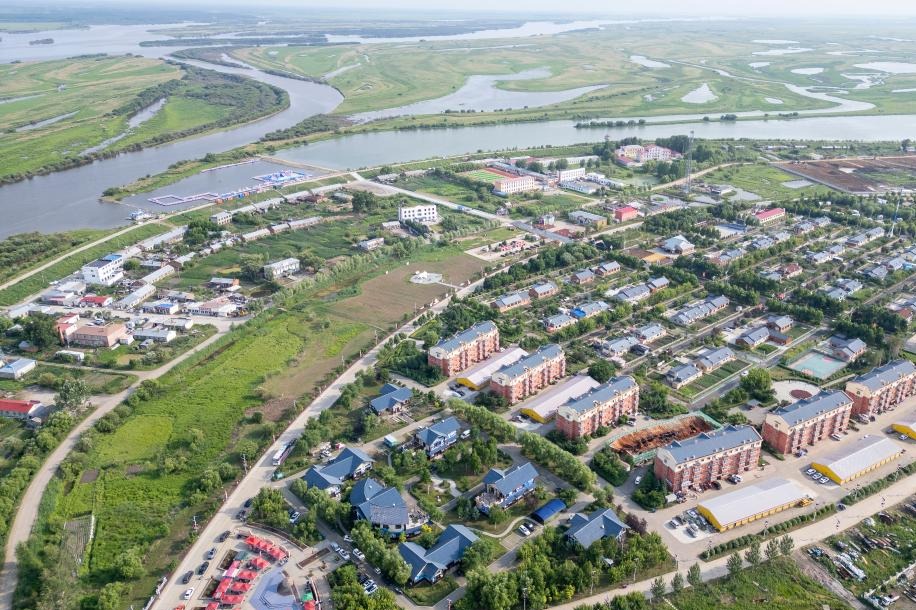Better cross-Strait ties key to de-risking for Taiwan's chip sector


Taiwan Semiconductor Manufacturing Company, the largest of its kind in the world, and its strategies have attracted global attention. The TSMC's annual report for 2022 showed the company commanded 30 percent of the global semiconductor production value (excluding memory) compared with 26 percent in 2021. A Counterpoint Research report further highlighted the TSMC's dominance: the company held 59 percent market share in the global wafer foundry industry by the end of the third quarter of 2023.
But despite its global importance, the TSMC's strategic interests are bound to the United States' market, raising concerns over its lack of industrial autonomy and exposure to risks such as technology leakages. The TSMC's recent announcement that it will expand its operations in Arizona, increasing investments from an initial $12 billion to an additional $40 billion, and aiming for 3 nanometer chip production by 2026, marks the company's largest venture outside Taiwan and one of the most significant foreign direct investments in US history.
As TSMC founder Morris Chang Chung-mou said, the investment includes $39 billion in US government subsidies, which contrasts with the TSMC's annual average investment of $30 billion.
However, the move comes with risks, including the potential risk of technology leakages, especially due to the passage of the US' CHIPS and Science Act of 2022. With the semiconductor industry being a linchpin of the Taiwan economy, some scholars on the island have called for the protection of this vital sector. The TSMC's robust financial performance, as indicated by its 2022 annual report, shows steady growth in net revenue over the past five years, more than twice in 2022 compared with 2018, despite the disruptions caused by the COVID-19 pandemic.
According to the 21 Data News Lab, until Dec 31, 2023, riding the wave of the artificial intelligence revolution, the TSMC's market value soared to 3.82 trillion yuan ($534.31 billion), up by a remarkable 42 percent, which underlined its pivotal role in the local economy and took it to the top of China's top 500 companies list.
Despite the TSMC's stronghold in the North American market with a 68 percent share, the heavy reliance on one market poses a great risk to the company amid policy shifts and trade disputes. Diversifying market shares in Europe, the Middle East and Africa, where the TSMC holds a mere 5 percent market share, could reduce its dependency on the US market. Also, by focusing more on Asia, particularly on the Chinese mainland where it holds 11 percent of the market share, the TSMC can expand its market and reduce risks.
Taiwan seeks to minimize its industrial risks, and the best way it can do so is by collaborating with the mainland. The complementary industrial structures of the Chinese mainland and Taiwan offer the TSMC an opportunity to optimize its resource allocation and realize mutual benefit through cooperative projects.
Official data from Taiwan's financial authorities for the first 11 months of 2023 show that exports to the Chinese mainland and the Hong Kong Special Administrative Region totaled $138.89 billion, 2.05 times more than to the US, and 3.6 times more than to Europe. By sharing technological resources, promoting innovation and technological cooperation, both sides of the Taiwan Strait can facilitate synergistic development across the industrial supply chains, especially in areas such as packaging testing and smart manufacturing.
The dividends of cross-Strait industrial collaboration are manifested in three key aspects. First, collaboration with the mainland offers Taiwan's businesses a larger market and more development opportunities. Cross-Strait cooperation already covers various sectors, including electronics, machinery manufacturing and biopharmaceuticals. And General Administration of Customs data for January to November 2023 show that Taiwan's exports to the mainland totaled 1.27 trillion yuan, about 232.97 billion yuan more than that to the US, highlighting the mainland's significance to Taiwan's economic development.
Second, industrial collaboration can help improve cross-Strait relations. By deepening economic ties through industrial cooperation, the two sides of the Strait can promote the peaceful development of cross-Strait ties, especially since trade has become a pillar supporting the development of cross-Strait relations.
And third, cross-Strait industrial collaboration can boost the regional economic integration process. As part of the Asian economy, Taiwan's active participation in regional economic integration, coupled with closer economic ties with the mainland, can contribute to mutual prosperity. Indeed, cross-Strait trade relations have become an integral part of the Asian economic integration process.
In conclusion, the key to de-risking Taiwan's industries lies in stronger cross-Strait relations, not least because deepening cross-Strait relations will unlock broader development prospects and opportunities. Achieving cross-Strait integration requires better policy communication and infrastructure connectivity, smooth trade, financial connectivity, and people-to-people exchanges. And removing institutional barriers and promoting the free flow of resources are essential to achieving that goal.
The author is head of the Institute of Taiwan Economics, Central University of Finance and Economics.
The views don't necessarily represent those of China Daily.
If you have a specific expertise, or would like to share your thought about our stories, then send us your writings at opinion@chinadaily.com.cn, and comment@chinadaily.com.cn.

































